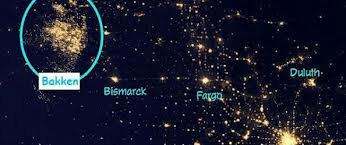The White House announced a long-awaited plan today, a "Strategy to Reduce Methane Emissions."
As you know, methane is the main component of natural gas, but it also leaches from coal production and landfills as organics degrade. When released into the atmosphere, the gas is at least 20 times more effective at trapping heat than carbon dioxide – a climate-change forcer. Methane is responsible for nearly 9% of US greenhouse gas emissions, increasing 11% since 1990, says the White House.
Environmental groups call the plan a good first step, but it requires lots of information gathering and after that, regulations "could" be in place in a couple of years.
The only real line of action seems to be that this year, the Bureau of Land Management (BLM) will propose standards for oil and natural gas production on public land. We assume that means the extremely weak ALEC-based fracking standards will be updated.
On EPA’s side, it will decide whether to pursue regulations – which would be completed by the end of 2016 – based on feedback from experts after it releases five white papers this spring. The papers will explore how to best regulate emissions from oil and gas production on public and private land.

"The Administration has laid out a process for EPA to review the facts and we are confident that EPA will find overwhelming evidence in favor of issuing strong regulations directly regulating methane from the Oil and Gas industry. Furthermore, reducing methane by requiring industry to stop the leaks is a "win-win-win-win" that saves fuel, reduces greenhouse gas emissions, improves air quality, and helps ensure pipeline safety," says Conrad Schneider of the Clean Air Task Force.
"Even at today’s low natural gas prices, repairing virtually every methane leak from gas wells, processing plants, and compressor
stations pays for itself, once the leak is found. New data from thousands of surveys of these sites shows that using infrared cameras to find the leaks is inexpensive enough to make leak detection and repair (LDAR) programs a very cost- effective way to reduce harmful pollution," says the Clean Air Task Force after releasing a study on 4,000 sites in the US and Canada.
Mandatory LDAR programs would cost the industry a few tenths of a percent of revenue, the study finds.
"Our results demonstrate that not only does cleaning up methane
emissions benefit the climate but it can be done cheaply and quickly. We call on EPA to do its job and require clean-up of methane leaks from the oil and gas industry," says David McCabe, Senior Atmospheric Scientist for Clean Air Task Force.
The Strategy also calls for:
- EPA will propose updated standards to reduce methane emissions from new landfills this summer and solicit comments on whether to do the same for existing landfills.
There are 621 landfill gas-to-energy projects operating and 450 sites with potential, according to EPA’s Landfill Methane Outreach Program.
- BLM will open a public comment period this month on whether methane should be captured and sold from coal mines that are on public land.
- The Biogas Roadmap, which the dairy industry signed onto last year, will be officially released in June.
- Improved ways to measure methane emissions, giving $8 million to the National Oceanic and Atmospheric Administration for more towers and other technologies.
The American Petroleum Institute came out against the plan, saying companies already have a "built-in incentive" to capture methane emissions because they can be sold for a profit.
"Additional regulations are not necessary and could have a chilling effect on the American energy renaissance, our economy and our national security," says Howard Feldman, director of regulatory and scientific affairs.
Then why isn’t the industry capturing and selling methane emissions?
The natural gas industry on the other hand, said it will work with the Obama administration. In February, the industry formed a task force to stop flaring in North Dakota by the end of the decade. The wasteful practice sends about 29% of fracked gas into the air, worth about $1 billion a year.
Read our article, US Methane Emissions Beat Estimates, Thanks to Fracking.
